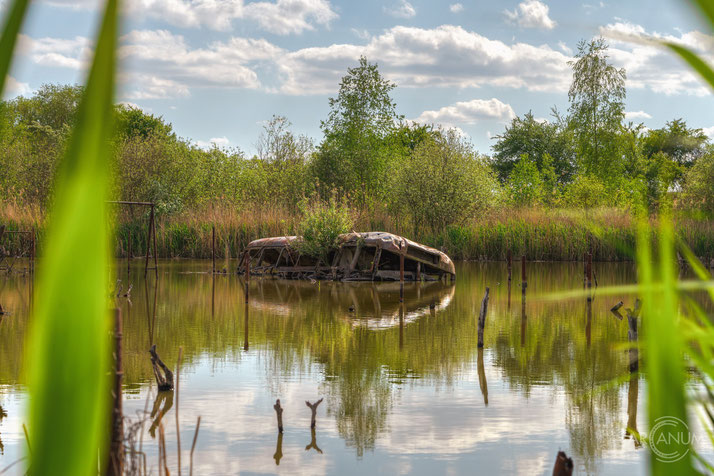The Bus in the lake
A bus in a lake? How did it get there? The story is less fantastic than you might imagine. There was once a large lake here, the water surface of which was gradually reduced from the 16th century onwards, and the lake became a drainage stream, the Salza.
There were five ponds on this river near the village of Langenbogen, which the Archbishop of Magdeburg, Friedrich III von Beichlingen, had created and which were all drained over the centuries.
The area along the former ponds was developed in the 19th century with a sugar factory (demolished in 1994) and
and the associated settlement "Welle", and in the 20th century gardens were laid out on the former lake areas. Draining the "salty lake" using canals and reducing the water power of the river Weida (by lowering the ground level) could only be achieved with pumps and when several of these pumps (at the sugar factory) were switched off after 1990, this led to some areas of water rising again.
In this way, the horseshoe-shaped original Great Castle Pond was re-created, which had protectively surrounded the peninsula on which a castle once stood, which was probably primarily a pleasure palace for the archbishops of Magdeburg, but also controlled the important Halle-Eisleben road.
Some of the buildings that previously served as garden sheds still protruded from the pond, including a particularly prominent discarded bus.
Over the years, the bus had become a popular spot for photographers.
However, after the start of the CoViD pandemic early in 2020, visits to the site increased significantly and many people put themselves in great danger trying to reach the bus by swimming.
So the local council decided to remove the bus. In November 2020, the bus was finally pulled out of the lake with heavy equipment and scrapped.
Visited: May 17, 2020
Location: Langenbogen/Teutschenthal, Germany
Status: Removed













